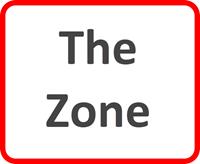As the bond markets react to the Federal Reserve’s recent announcement that there will be no major changes to the U.S. rate environment, investors are now focusing on signs of a potential top in the bond markets. Bond yields have dropped significantly in recent weeks, and the Federal Reserve has indicated that it will not be raising rates again anytime soon. As a result, some investors are now questioning if a top in bond yields is near.
There are several potential signs of a top in the markets, and these signs can be helpful for investors in making decisions about where to allocate their funds. One of the most common signs of a potential top is when long-term bond yields start to climb while short-term yields remain low. This indicates that investors are no longer satisfied with the low yield environment and are beginning to search for better returns. Rising bond yields can also be an indicator that short-term interest rates are increasing.
Another sign of a potential top in bond yields is when the yield curve flattens out. A flattening curve indicates that investors are expecting that there may be no further rate increases and that the current yield on bonds is essentially the highest they may ever reach. Finally, when bond prices start to drop significantly in response to the Fed’s decision to maintain current rate levels, this could also indicate a potential market top.
It is important to note that while these signs may help investors make more informed decisions, they do not necessarily guarantee a top in the markets. It is important for investors to closely monitor the markets and closely watch for any changes or developments that may indicate a potential peak in yields. Additionally, investors should still be mindful of potential risks associated with any investment in bonds, as the market could always turn dramatically.
Investing in bonds can be a great way to diversify a portfolio and generate stable returns, but caution should be taken when looking for signs of a potential top in the bond markets. Investors should consider the risk of a potential reversal before aggressively investing in bonds, as the yields may turn out to be much lower than expected. With the Federal Reserve seemingly content with the current rate environment, investors must exercise thorough analysis and discretion when making decisions related to bonds in order to make sure they are maximizing their returns.





